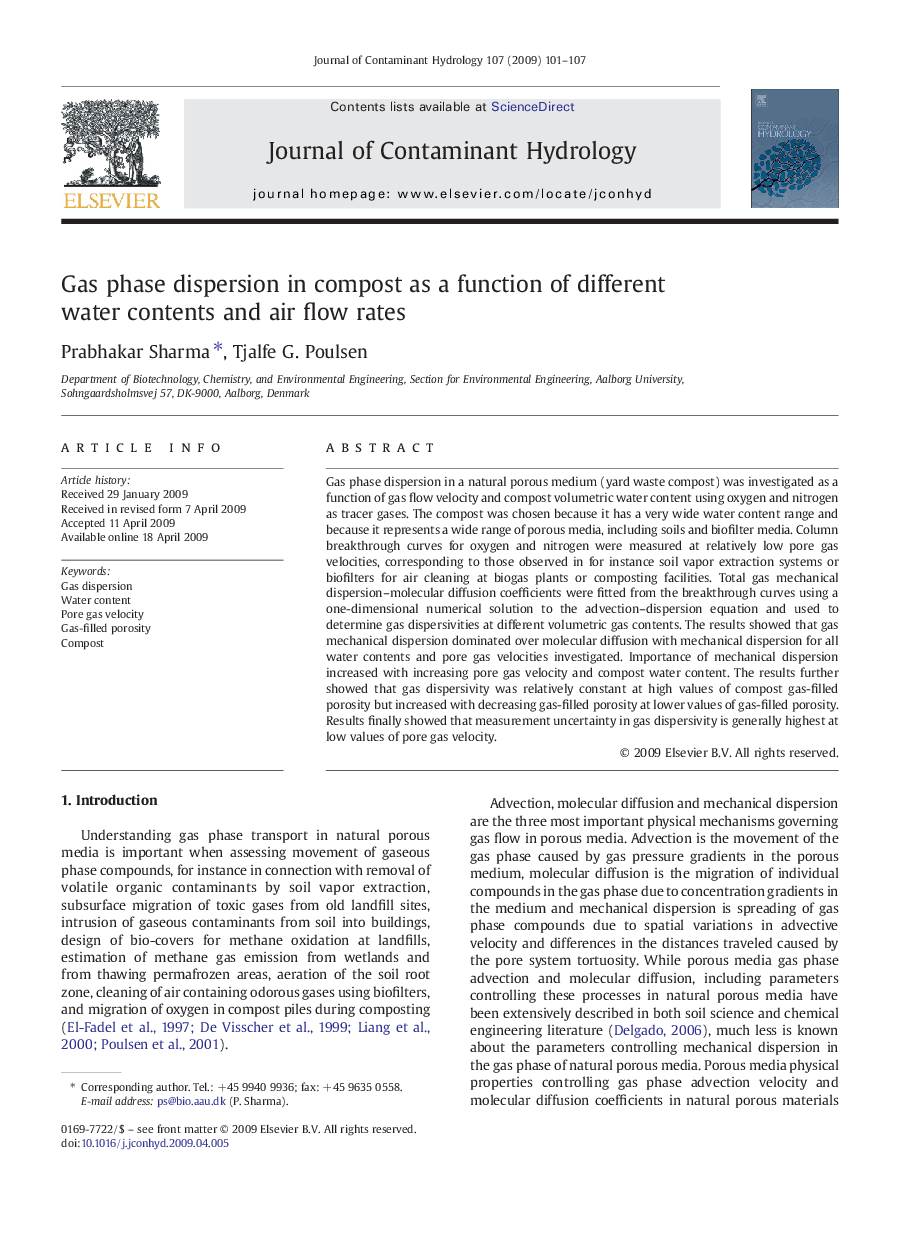| کد مقاله | کد نشریه | سال انتشار | مقاله انگلیسی | نسخه تمام متن |
|---|---|---|---|---|
| 4547205 | 1627097 | 2009 | 7 صفحه PDF | دانلود رایگان |

Gas phase dispersion in a natural porous medium (yard waste compost) was investigated as a function of gas flow velocity and compost volumetric water content using oxygen and nitrogen as tracer gases. The compost was chosen because it has a very wide water content range and because it represents a wide range of porous media, including soils and biofilter media. Column breakthrough curves for oxygen and nitrogen were measured at relatively low pore gas velocities, corresponding to those observed in for instance soil vapor extraction systems or biofilters for air cleaning at biogas plants or composting facilities. Total gas mechanical dispersion–molecular diffusion coefficients were fitted from the breakthrough curves using a one-dimensional numerical solution to the advection–dispersion equation and used to determine gas dispersivities at different volumetric gas contents. The results showed that gas mechanical dispersion dominated over molecular diffusion with mechanical dispersion for all water contents and pore gas velocities investigated. Importance of mechanical dispersion increased with increasing pore gas velocity and compost water content. The results further showed that gas dispersivity was relatively constant at high values of compost gas-filled porosity but increased with decreasing gas-filled porosity at lower values of gas-filled porosity. Results finally showed that measurement uncertainty in gas dispersivity is generally highest at low values of pore gas velocity.
Journal: Journal of Contaminant Hydrology - Volume 107, Issues 3–4, 21 July 2009, Pages 101–107